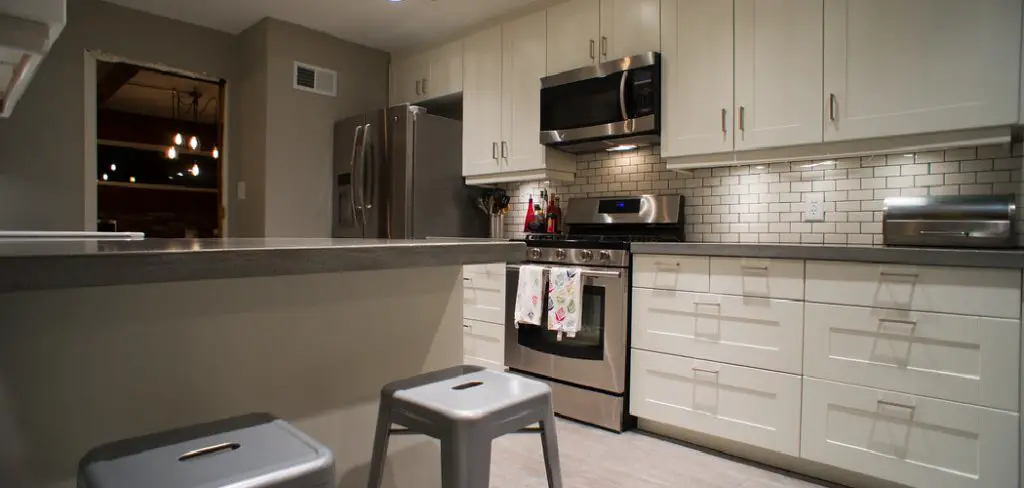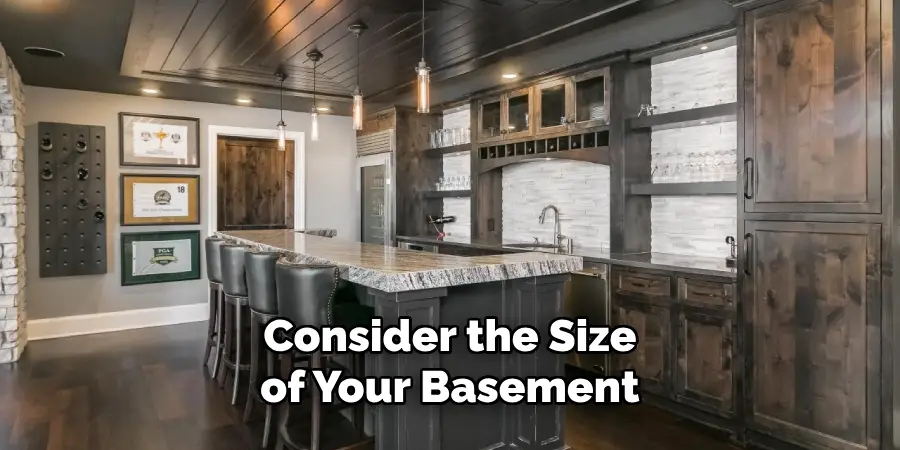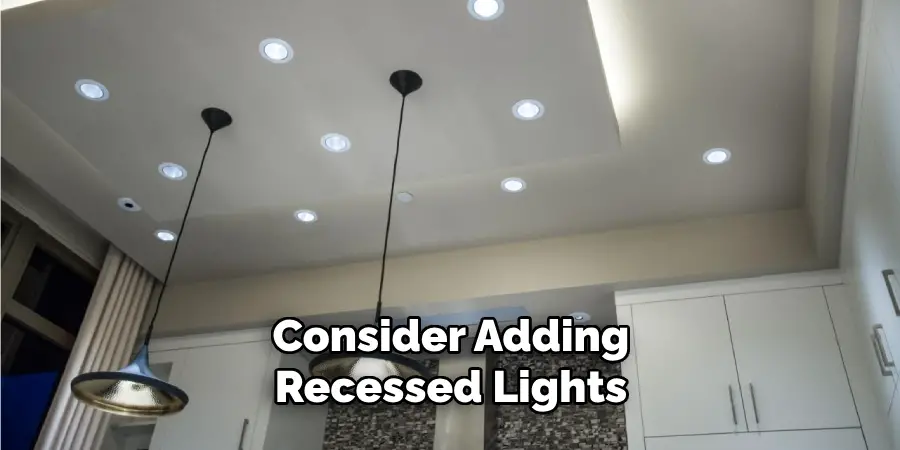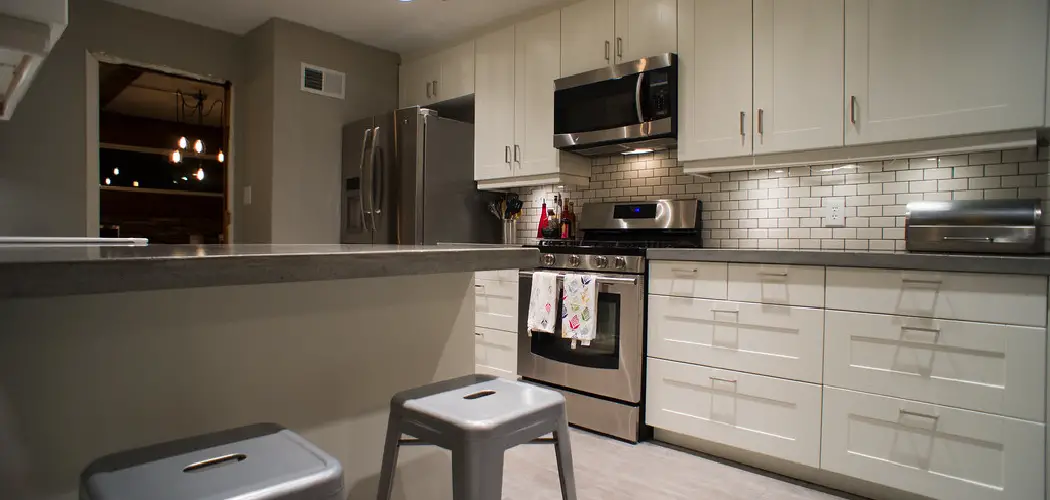Are you thinking of remodeling your basement and adding a kitchen? A basement kitchen installation can be a great way to add more usable space in your home. You can use it to make dinner, set up a home bar for entertaining friends, or simply store food in the fridge and pantry.

Kitchen is a great way to add value to your house. You may be wondering how to install a basement kitchen. Here are some steps to get you started on the journey of installing your own basement kitchen.
Required Items
Before you start the process of installing a basement kitchen, you’ll need to make sure you have all the necessary items. Start by gathering your tools and supplies. You’ll need:
- A drill and bits
- Measuring tape
- Level
- Nails or screws
- Drywall or plaster patch kit
- New cabinets and appliances
- Paint or wallpaper to finish the walls
The last three items will depend on your plans for the basement kitchen. If you’re installing a full kitchen, make sure to get cabinets and appliances that match the space and style of your basement.
10 Steps on How to Install a Basement Kitchen
Now that you have all the necessary materials, it’s time to start installing! Here are 10 steps on how to install a basement kitchen:
1. Choose Your Layout
When it comes to installing a basement kitchen, the layout is an important factor that should not be overlooked. To ensure optimal functionality, take the time to plan out your layout before beginning installation. Consider the size of your basement and how much storage space you need.

2. Measure and Mark Position of Kitchen Cabinets
Once you’ve chosen a layout, it’s time to measure and mark the positions for your kitchen cabinets. Make sure all measurements are accurate so that your cabinets will fit properly in the space allocated. If necessary, use a level to make sure all measurements are correct.
3. Install Cabinets and Appliances
Now that you’ve measured and marked the positions for your cabinets, it’s time to install them. Follow the instructions included with the cabinets and appliances for proper installation. Make sure everything is properly secured in place before moving on to the next step.
4. Hang Wallpaper or Paint Walls
Once your cabinets and appliances are installed, it’s time to finish up the walls. Choose a wallpaper or paint color that complements the overall design of your basement kitchen. Make sure to use high-quality materials so that your walls will last for many years to come.
5. Install Countertops
The next step is to install countertops in your basement kitchen. Choose a material that’s durable and easy to clean, such as granite or quartz. Measure the area where you plan to install the countertop and make sure all measurements are correct before cutting the material.
6. Connect Plumbing and Electrical
Now that the countertops are installed, it’s time to connect the plumbing and electrical. Make sure you follow all safety protocols when dealing with electricity. If necessary, hire a professional electrician to assist you with this step.
7. Add Backsplash
A backsplash is a great way to add some style and color to your basement kitchen. Choose a material that complements the countertop, such as ceramic tile or glass. Measure the area carefully before cutting any materials.
8. Add Lighting Fixtures
Once you’ve installed the backsplash, it’s time to add lighting fixtures. Consider adding recessed lights, pendant lights, or track lighting for a modern look. Place the fixtures strategically to ensure that you have adequate light in all areas of your basement kitchen.

9. Finish Touches
Now it’s time to add the finishing touches to your basement kitchen. Consider adding knobs and handles to cabinets and drawers. Add a rug to the floor for some extra comfort and style. Lastly, install any curtains or window treatments you may need to finish your kitchen.
10. Enjoy Your Basement Kitchen!
Congratulations! You’ve successfully installed a basement kitchen in your home. Now it’s time to enjoy your new space — make some food, entertain some friends, or just relax in your new basement kitchen.
Installing a basement kitchen is a great way to add extra space and value to your home. With these steps on how to install a basement kitchen, you’re now ready to transform your basement into a functional living space.
8 Mistakes You Might Make When Installing a Basement Kitchen
Installing a basement kitchen can be a challenging project. It’s important to be aware of the common mistakes that people make during the installation process. Here are 8 mistakes you might make when installing your own basement kitchen:
1. Not Measuring and Marking Properly
The first mistake is not measuring and marking the positions for your cabinets and appliances correctly. Make sure all measurements are accurate so that everything fits in the space you’ve allotted for it.
2. Not Following Instructions
Make sure to follow all instructions included with the cabinets and appliances for proper installation. Failure to follow these instructions can result in improperly installed items, which can be dangerous and create an eyesore.
3. Not Taking Safety Precautions
When dealing with electricity, make sure to take the necessary safety precautions. Hire a professional electrician if you’re not comfortable handling wiring or electrical work yourself. This will help ensure your safety and the safety of your family.
4. Not Choosing Durable Materials
When selecting materials such as countertops, flooring, and walls, make sure to choose durable materials that can withstand wear and tear. This will help ensure your basement kitchen lasts for many years to come.

5. Not Dealing with Moisture Issues
If your basement is prone to moisture issues, make sure to deal with them before installing a kitchen. If necessary, consult with a professional who can help you troubleshoot and solve any moisture issues in your basement.
6. Not Installing Proper Ventilation
When installing a kitchen in your basement, make sure to install proper ventilation to avoid any buildup of harmful fumes or odors. A ventilation system will ensure your basement kitchen is a safe and healthy place to be.
7. Not Planning Out the Layout
Before beginning installation, make sure you plan out the layout of your basement kitchen. Consider the size of your basement and how much storage space you need. Having a clear vision for the end result will help make installation easier and faster.
8. Not Following Building Codes
Finally, make sure to follow all local building codes when installing a basement kitchen. This will help ensure your safety and that of your family and guests.
Installing a basement kitchen is an exciting project, but it’s important to be aware of the common mistakes associated with it. With these tips, you’ll be able to install your basement kitchen without any issues.
Frequently Asked QuestionsAbout Installing Basement Kitchens
Installing a basement kitchen can be an intimidating project, but with the right knowledge and guidance, it doesn’t have to be. Here are some of the most common questions people have about installing their own basement kitchen:
1. Do I Need to Hire a Professional?
In most cases, it isn’t necessary to hire a professional for installation. But if you don’t feel comfortable tackling the project yourself, then consulting with an expert is recommended.
2. What Materials Should I Use?
When selecting materials for your basement kitchen, make sure to choose ones that are durable and easy to clean. Popular choices include ceramic tile, laminate countertops, and vinyl flooring.
3. How Can I Deal with Moisture Issues?
If your basement is prone to moisture issues, make sure to address these before beginning installation. Consider installing a dehumidifier or waterproofing the walls and floors of your basement for added protection.

4. How Long Does Installation Take?
If you’re comfortable tackling the project yourself, then installation can take anywhere from a few days to several weeks depending on the size and complexity of your basement kitchen. Hiring a professional will help speed up the process.
5.How Much Will It Cost?
The cost of installing a basement kitchen will vary depending on the materials and appliances you choose. Make sure to plan out your budget beforehand to ensure that your project stays within it.
With these FAQs, you’ll be better prepared to install a basement kitchen in your home. Making sure that you have the right information and knowledge before beginning the installation process is key to a successful project.
Conclusion
Installing a basement kitchen is a great way to make use of unused space in your home and increase its value. With the right steps and materials, you can have a beautiful, functional kitchen in no time. From measuring and marking positions for cabinets and appliances, to choosing durable materials and dealing with moisture issues, there’s a lot that goes into installing a basement kitchen.
Remember to always follow building codes and safety protocols when working with electricity or plumbing. With these steps on how to install a basement kitchen in mind, you’ll be able to transform your basement into a beautiful living space.

